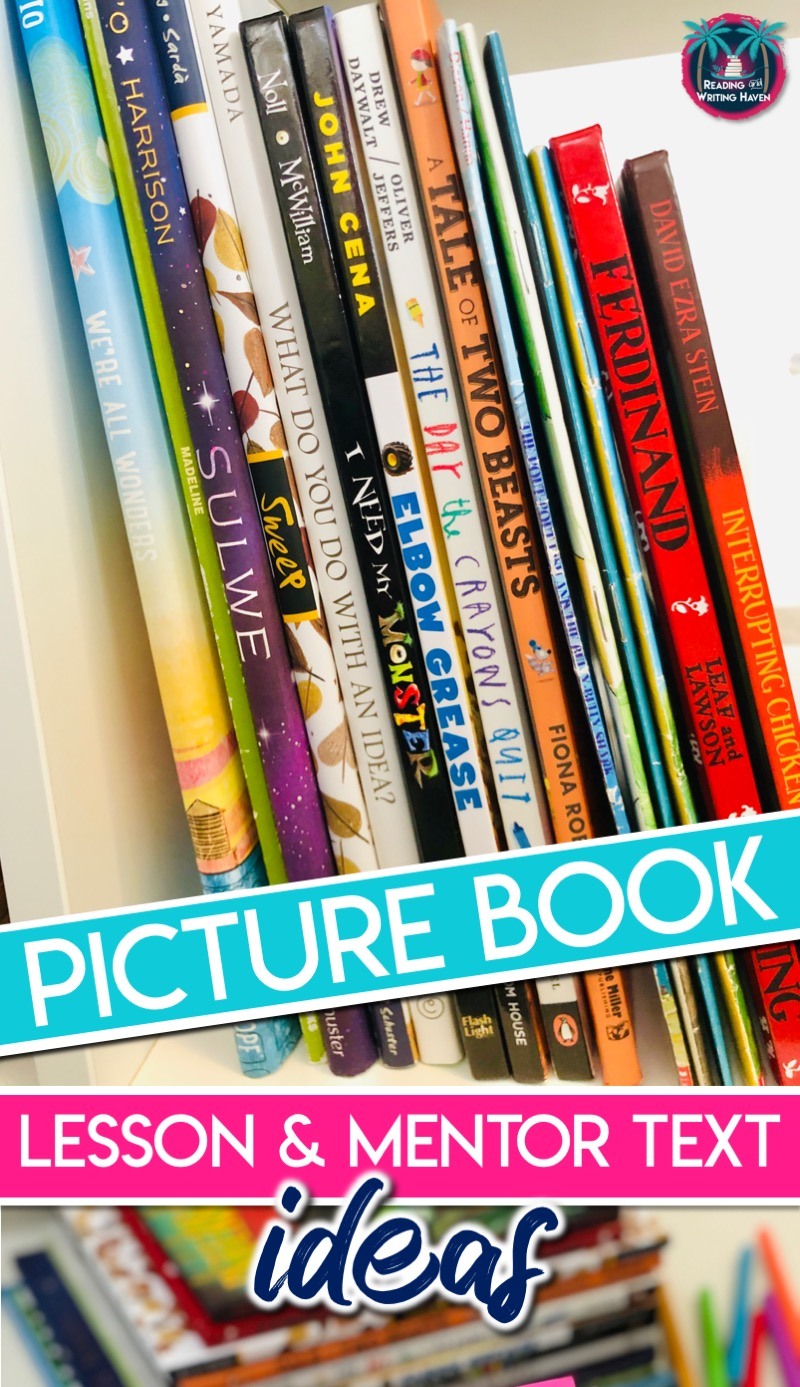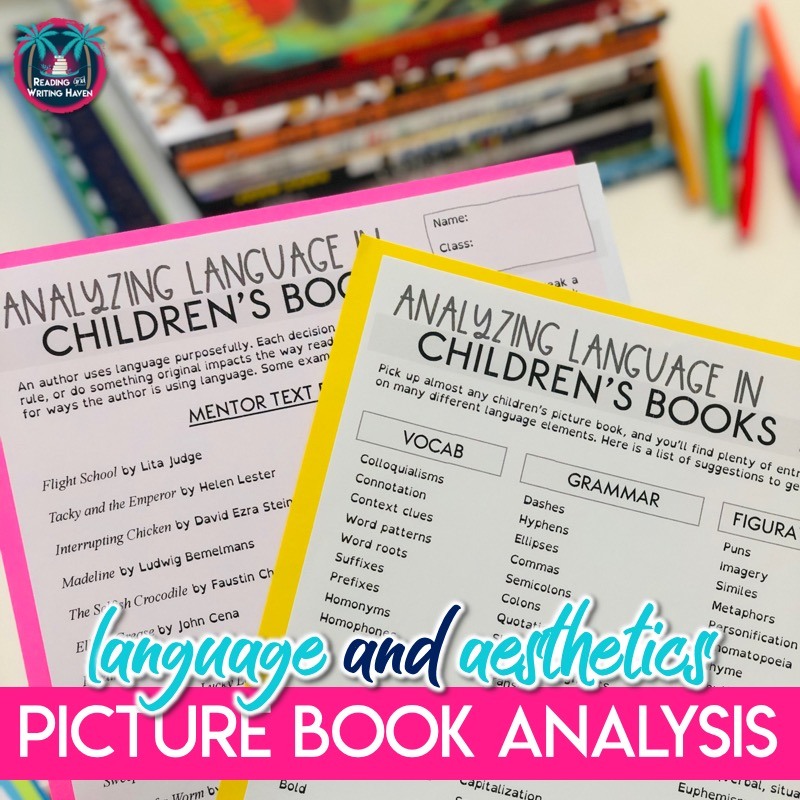Analyzing Children’s Books in the Secondary Classroom
With the rise of independent reading and workshop approaches, many secondary ELA teachers are looking for mentor text recommendations. How can we encourage students to connect whole-class lessons to independent reading? One of the most practical methods for me has been picture books. Analyzing children’s books is a succinct and effective bridge from whole class to small group or independent application.
But how? This is my general progression.
Introducing
I usually begin one of two ways, but they both lead back to a direct instruction mini lesson.
One option is simply to introduce the concept you are studying to students. Ask them to jot a few notes. Then, read the mentor text children’s book to them, analyzing aloud as you go. Show students how you pause to notice what the author is doing. Then, question why the author has used this language or made this writing decision. What impact does it have on readers? How would the text and the reading experience be different without this element or technique?
The second method is to allow students to read the text first and make observations about the concept of study – punctuation or word choice, for example. After giving students time to dig in, begin direct instruction. The benefit of this way is giving students the opportunity to do the thinking before telling them what we think.
Scaffolding
Then, I ask students to practice in small groups. Select picture books that you know have elements of what students will be analyzing. To differentiate, organize groups based on a common goal. Not every group has to analyze the same concept. Tie this activity into workshop, literature circles, and book clubs by catering the area of study (language, author’s craft, reading strategy) to students’ current needs.
Extending
Once they’ve had enough practice, students can extend their thinking by analyzing these concepts in their independent reading books. Talk with students to see how they are doing when you confer, or gather data quicker using entrance or exit activities.
We can turn these analytical activities into gallery walks and writing prompts when we ask students to be observant, to ask questions, to emulate, and to explore the impact of an author’s choices on readers.

TYPES OF LESSONS
After determining your instructional approach with the first minilesson, you’re ready to start branching out. It’s time to and explore new opportunities for diving into picture books.
Language
For one, analyzing children’s books is a helpful way to study language.
- Why do author’s break or follow certain grammar rules? In what genres of writing would it be acceptable and even beneficial for us to do the same?
- What effect do punctuation marks like ellipses, dashes, and colons have on the reading experience? How can we use these to strengthen our own writing?
- Why do authors choose specific verbs, adjectives, and adverbs? What are their connotations?
- Does the author use words with multiple meanings? What is the effect of this word play?
- How does the author’s use of figurative language add value to the text?
- In what way does the language help to develop the overall tone or mood?
- How does the language contribute to a realistic setting?
Looking for a quick analytical activity you can use to guide students through the scaffolded approach to children’s book analysis? You can use this critical thinking, note-taking page with a whole-class mini lesson, small group discussion, and independent application of language in children’s books.
(The Interrupting Chicken and How I Became a Pirate are two of my favorites picture books for language analysis.)
Reading Strategies
Want to teach students how to apply reading strategies to increase comprehension? Whether you’re working on summarizing, connecting, inferring, or author’s craft, picture books like Elbow Grease, A Tale of Two Beasts, and Sulwe are an ideal place to begin.
If you use Notice and Note signposts, children’s literature is a user-friendly and engaging entry point for middle and high schoolers of any age. The Pout-Pout Fish and the Bully-Bully Shark, for instance, has Again and Again, Tough Questions, and Contrasts and Contradictions.
As you read, pause to ask questions and think aloud.
- Why is the character acting this way?
- Have I ever experienced anything like this? How did it make me feel?
- What is this part telling me about the character or the theme?
- What is the author trying to say?
These one-page reading companion sheets are a convenient thread to connect mini lessons to guided and independent application.
Aesthetics
Picture books are designed intentionally. Authors, illustrators, and publishing companies play with the arrangement of language, colors, and appearance. These choices often help to develop the mood, theme, or symbolism in the text. Many times, students read over these elements. We can encourage them to intentionally stop, notice, and analyze the visual aspects of picture books. Some young adult novels, especially those reluctant readers enjoy, are designed with similar features that enhance the reading experience.
A few of my favorite children’s books for analyzing aesthetics are Sweep, Flight School, I Need My Monster, The Day the Crayons Quit, and What Do You Do with an Idea?
Using picture books as mentor texts is one of my favorite strategies. Students don’t have to struggle with the meaning, which means they can focus all of their energy on the strategy we are studying. Plus, analyzing children’s books is a concise way to build in complete storylines you will be able to refer back to and connect with throughout the year.
Looking for more ideas? Lauralee at Language Arts Classroom has some suggestions on incorporating picture books in your secondary classroom library.
